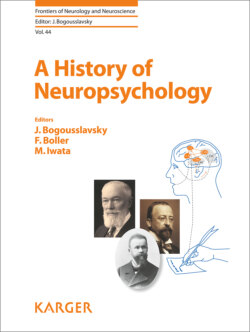Читать книгу A History of Neuropsychology - Группа авторов - Страница 23
На сайте Литреса книга снята с продажи.
Music
ОглавлениеStill other evidence pointed to a right-hemisphere role for music. Persons made speechless by left-hemisphere injury could still sing or carry a tune, abilities presumably mediated by the intact right hemisphere. Hughlings-Jackson [38] found 3 such persons among 28 with aphasia; Bouillaud [11] found one more, a man who composed and sang without “even a minor mistake [in articulating] the appropriate sounds” (quoted in translation in Della Rocca [43], p 140); and in possibly the earliest report, from 1745, van Dalin [44] described a man who, after a stroke with loss of speech and right-side paralysis, could “sing” and “whistle hymns … learned before he became ill … so purely and explicitly like any other normal person” (quoted in translation in Johnson et al. [45], p 18). All this evidence was only indirect. Direct evidence came from patients with right-hemisphere lesions who showed the symptoms in reverse: they could still speak but not carry a tune, and their speech lacked normal “song,” or prosody. August Knoblauch [46] called the condition “amusia” but, envisioning the motor and auditory centers for tones as being close to those for speech and comprehension, localized music in the left hemisphere, not the right (see Johnson and Graziano [47], p 112).
